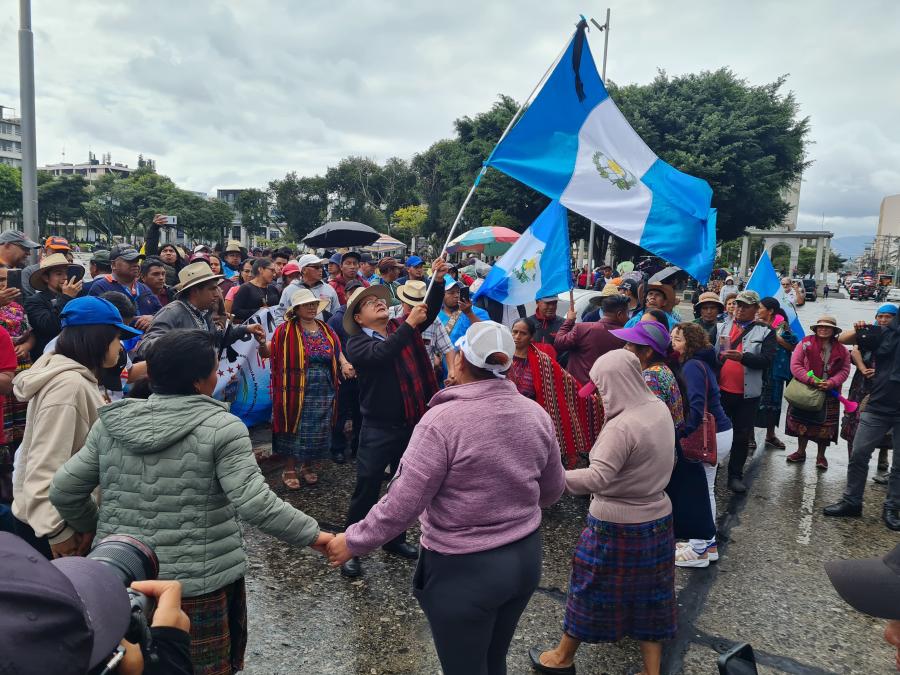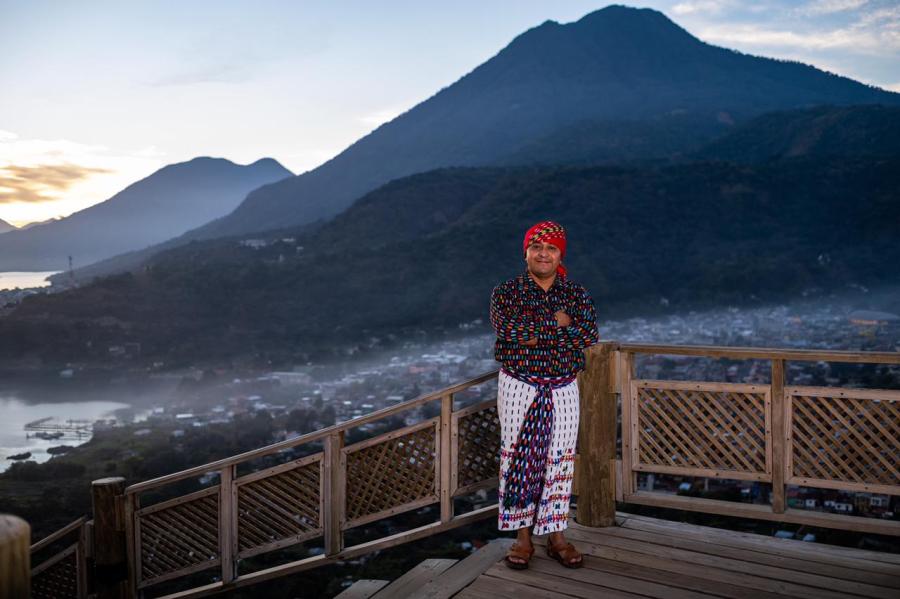In August 1984 Cultural Survival, Americas Watch and Germany's Green Party sent delegations to Mexico to assess the situation of the Guatemalan refugees in Chiapas. Their highly critical reports coupled with several condemning articles in the Mexican press, put pressure on the Mexican government to rethink its resettlement of 46,000 Guatemalan refugees to mass camps 250 miles away in Campeche.
In late September, the government (COMAR) finally chose to bend to domestic and international pressures by sending a message to the Catholic Church that the relocation of refugees would continue on a purely voluntary basis, and that delivery of food and medical supplies would resume in the Lacandon jungle camps. (Aid had been cut off for 3 months in an effort to force the refugees to Campeche.)
In addition, camp leaders would be allowed to visit and assess the new camps in Campeche, and all threats against the refugees would stop. This was clearly a victory for those defending the interest of the refugees in their desire to remain close to the border, a desire symbolized by the resistance of the Puerto Rico and San Caralampio camps - 6000 refugees willing to endure the worst of conditions in order to avoid resettlement in Campeche. Certainly one of the reasons for considering the relocation has been the fierce resistance of refugees themselves and the strong support they have had from the local Mexicans and the Catholic Church.
But according the immigration officials, while COMAR was announcing to the church and the people an easing of the pressure on refugees to resettle in Campeche, they were also informing government officials in Comitan that all refugees would be out of Chiapas by the end of December. The order for relocation came last April with the approval of Mexican President De la Madrid as a solution to domestic concerns as well as external pressure from the US and Guatemala. (Guatemala announced to Mexico early in the year that it would not cooperate with the Contadora process unless Mexico either returned the refugees to Guatemala, or resettled them within Mexico, away from the border.) So with no change of priorities in Mexico City, COMAR and the Department of State (Gobernación) were left to resolve the border situation in a way that enhanced Mexico's role as a peacemaker in the region while protecting its image as a haven for asylum seekers and a defender of human rights.
COMAR's new approach to the resettlement is more moderate than earlier policies, yet continues to take a hard line with the refugees. Although more sophisticated, the new approach to the resettlement of the refugees has continued to be abusive.
Turning the Mexicans against the Refugees
COMAR informed several communities (ejidos) along the border that they would be fined 30,000 pesos ($150 - a huge amount of money for Mexican campesinos) if they allowed any refugees to remain on their village lands. Federal agents have arrived in several other villages threatening to jail or fine any Mexican giving work to refugees. (In several cases, the Federal agents were actually thrown out of those villages!) The government has also sent a series of official communiques to local community leaders stating the relocation to be a formal order of the government, an "appeal to their patriotism so that no refugee remains in the Mexican communities in the region."
Use of 'Delayed Threats'
According to a Catholic church statement concerning the current situation in Chiapas: "The authorities don't tell the refugees they have to choose between going to Campeche or Guatemala. What they're saying is that it's better to go to Campeche now peacefully, because those who don't go voluntarily will be taken later by force by the Mexican army."
Cash Bonuses to COMAR Workers
Workers who are able to convince refugees to resettle in Campeche are given a commission for each "volunteer." The refugees refer to these workers as "conquistadors," the same name they give to those paid by the Guatemalan army to cross into Mexico and convince refugees to return to their villages in Guatemala.
Pursuit of Two Disparate Policies Towards Refugees
Mexico is following a moderate plan in the well-known "dissident" camps, Puerto Rico and San Caralampio de la Gloria, by resuming the distribution of food and medicine, and finally allowing the people to harvest their corn in Puerto Rico. Though bringing no food or medicine to San Caralampio, the government has allowed the Catholic church to bring in supplies, and has stopped its program of daily visits and threats by federal agents. Journalists and foreigners have also been allowed to visit this camp freely in an effort by the Mexican government to show that all is well. Yet other areas remain closed, and it is in these areas that the government continues with its separate policies.
- Chajul Refugee Camp. According to church sources, in early October all but 200 of the 1500 dissident refugees in Chajul gave in to the pressures of the Mexican army and the lack of food and were taken to Boca Lacuntun to await transportation to Campeche. In Boca Lacuntun, they joined other refugees encircled by Mexican soldiers. Permission had to be asked to leave the circle. As one church worker said, "Woe to anyone who wasn't back in the circle in 10 minutes."
- Jungle Area Surrounding Dissident Camps. The Mexican army is "combing" the jungle looking for refugees who have sought sanctuary in outlying Mexican villages. When discovered they are sent to Campeche.
- Las Margaritas Area. Relocation has initially begun on a voluntary basis, but with the use of threats, "conquistadors," and attempts to undermine the support of local Mexicans. Other tactics have included orders to immigration agents to confiscate machetes from the refugees so that they cannot work or collect firewood; harassment of the drivers of church vehicles to discourage church relief efforts, the presence of heavily armed federal agents in the area, and censuring of mail from Campeche. These actions, coupled with an increase in border harassments by the Guatemalan army, have resulted in a large-scale dispersal of refugees into the forest around the Las Margaritas and Montebello camps in the hope of hiding from Mexican authorities. This movement means abandoning all they worked for the past two years and all access to both government and church relief supplies. This is an area already swollen by thousands who have fled in a similar fashion from jungle camps such as Ixcan. Only a small proportion of refugees from these areas have voluntarily chosen to go to Campeche though no real numbers are actually known, since the area is closed to outsiders.
Most refugees just sit and wait in hopes that something may change, though many have been told to leave by local Mexicans who are afraid of being fined or imprisoned by government officials. Countless meetings are held by the men of the camps, and countless letters are written to the Mexican president. Few feel that Guatemala is safe to return to, but many have told this writer that they are thinking about it if they are forced to Campeche. In fact in early October, according the UNHCR, 101 refugees left from the Campeche camps to return to Guatemala.
According to the UNHCR approximately 700 refugees have returned through official channels to Guatemala since the relocation process began. At the border crossing at La Mesilla these refugees are transferred to the custody of the Guatemalan army in the presence of UNHCR officials, taken to the army base in Huehuetenango for approximately 10 days of questioning and those deemed non-subversive are transferred to the model village of Chacaj. Most young men are drafted immediately upon arrival in Guatemala, and there are unconfirmed reports of sterilization of the young women. According to the Guatemalan newspaper Prensa Libre, most returning refugees believe they will be able to return to their own land, but are sent instead to "development poles" (Poles de Desarrollo). These camps range from new towns with a minimal army presence to full concentration camps for the "retraining" of suspected subversives.
As the Guatemalan government prepares for civilian elections, it is in the army's best interest that the refugees return. This presents an image that the army has resolved the crisis in their country, and thus leaves them in a strong bargaining position after the elections (they have learned this from Argentina). For this reason the Guatemalan press gives much fanfare to refugees crossing back into Guatemala, but there is little news once these people arrive at the army base.
What happens to these people once they return? The army has already declared all refugees in Mexico to be guerrillas, and refuses to allow any human rights monitoring agencies to observe what is going on in the country with either the repatriated Mexican refugees or the tens of thousands of internal refugees still fleeing the army in the mountain areas to the north. According to SIAG there is also good reason to believe that the Guatemalan army will soon be mounting another major counterinsurgency drive into guerrilla controlled areas, certainly causing another flow of refugees into Mexico.
The Catholic church in Mexico has already developed contingency plans for up to 40,000 new refugees while the Mexican authorities continue to ignore all new refugees arriving in the Comalapa area as they flee the fighting in the Guatemalan Department of San Marcos.
In Campeche two new camps have been opened, and though most refugees are resigned to being there, many have escaped to return to Chiapas or to an accepting Mexican community in rural Campeche. Realizing the impossibility of removing all the refugees from Chiapas, COMAR has rumored that several thousand refugees will be allowed to remain. Still the threats and withholding of food continues. The severity of the whole process is evident in this statement by the Catholic Church: "It suffices to say that over 50 pregnant women have suffered miscarriages which can be attributed to the relocation and its conditions." The suffering these refugees experienced fleeing Guatemala is well documented. That suffering should not be allowed to continue in Mexico.
Article copyright Cultural Survival, Inc.


